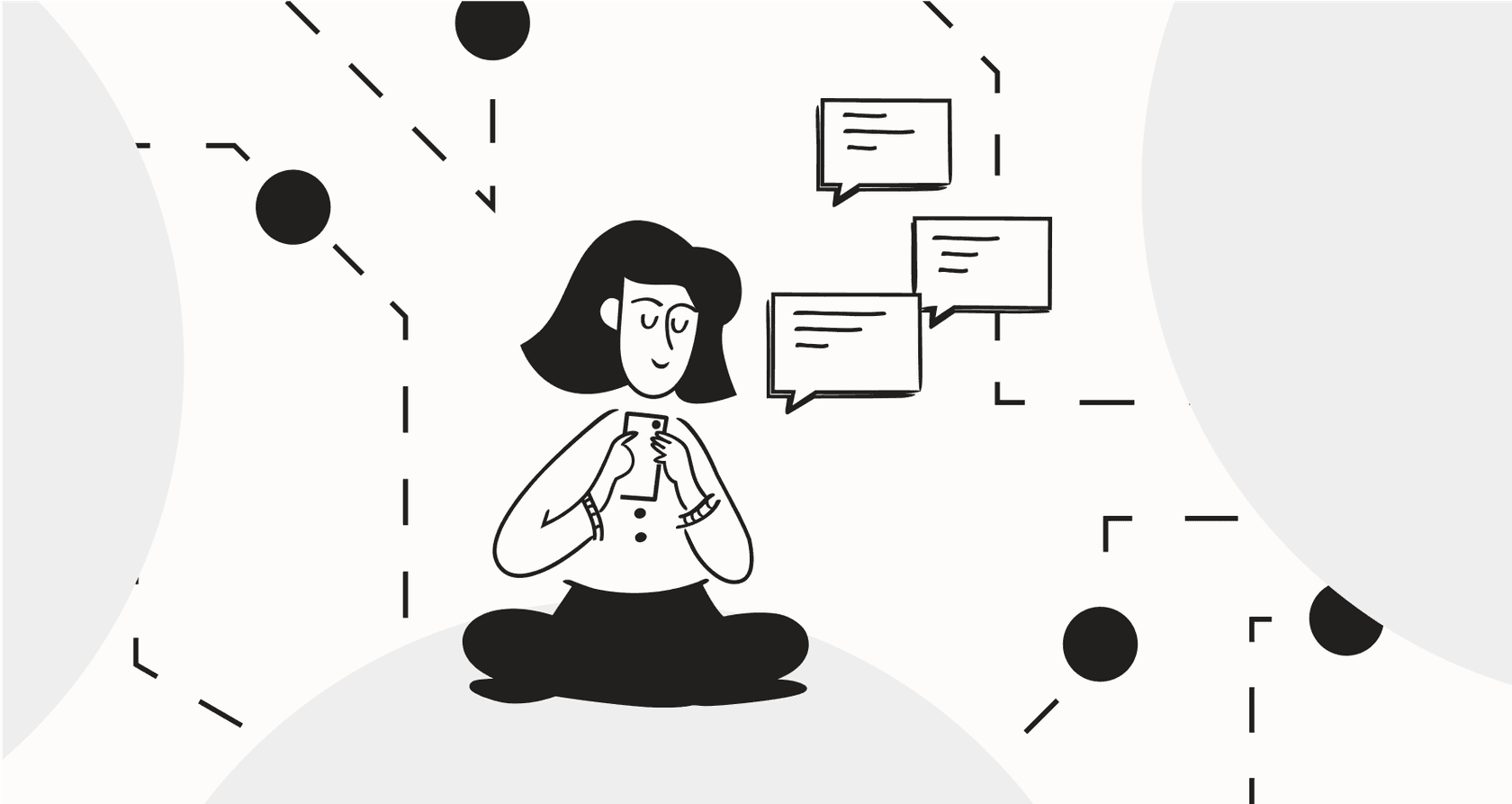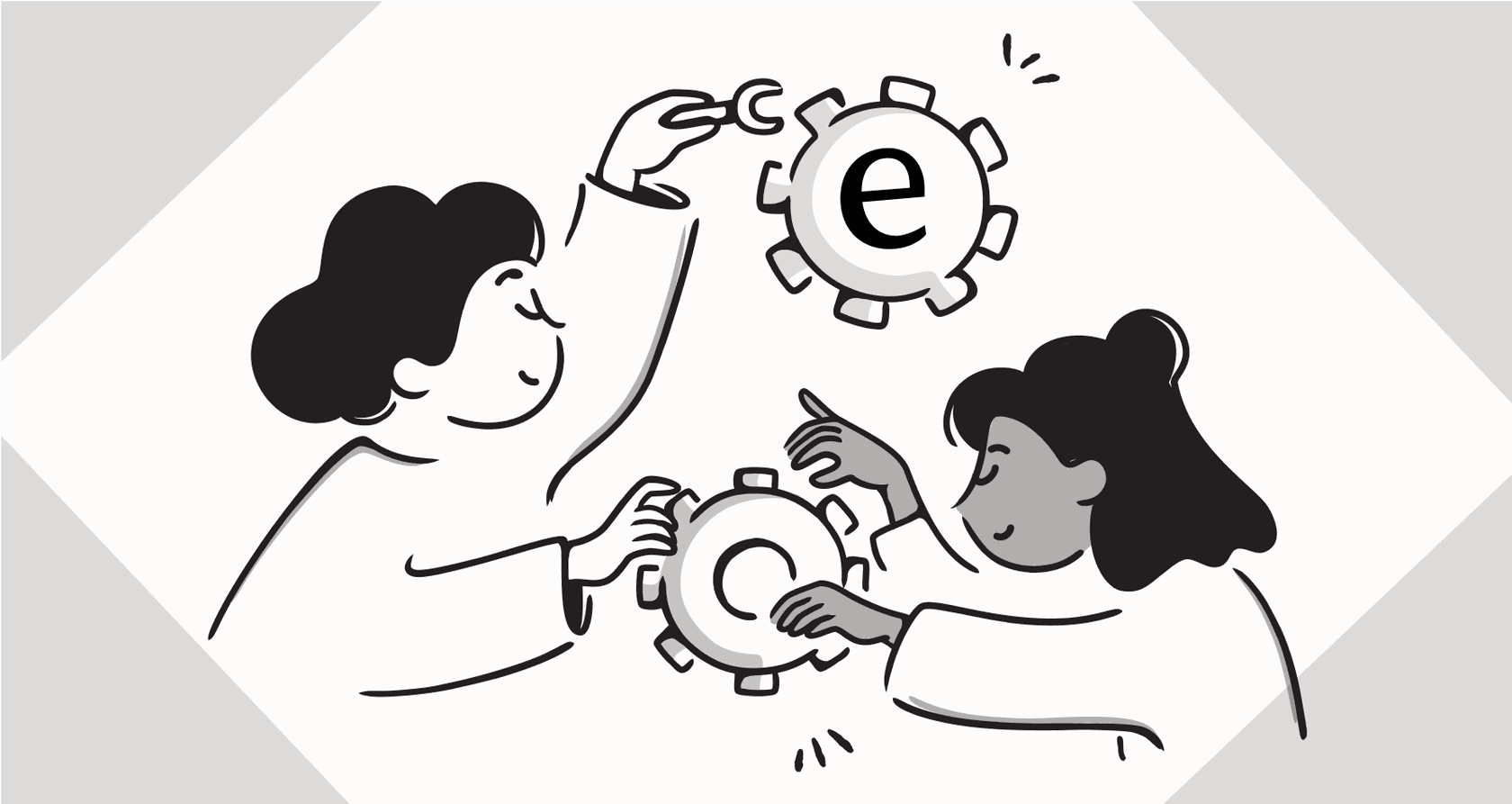
Customer support feels like it's changing at lightning speed, doesn't it? With customers expecting faster responses and ticket volumes constantly climbing, keeping up can sometimes feel like you're running uphill. This is exactly where AI helpdesk tools come into the picture. They're becoming essential for tackling these challenges head-on, helping your team work smarter, not just harder.
In this guide, we're going to dig into how these AI tools actually work, the benefits they bring to both your customers and your support team, and walk through a practical way to get them set up and used effectively. You'll see how these tools can handle routine tasks, give your agents a hand, and make your whole operation smoother. While there are tons of tools out there, solutions like eesel AI are built to make using AI simple and powerful, integrating nicely with the systems you already use.

The leap in advancement from the traditional support into AI powered support.
What exactly are AI helpdesk tools?
Think of AI helpdesk tools as systems that use artificial intelligence (stuff like machine learning and natural language processing) to automate, help out, and generally make customer support operations work better. They're a step up from regular helpdesk software because they add intelligence that can actually understand what someone is asking, give answers, and automate tasks based on the conversation's context.
AI helpdesk tools usually have a few key pieces that work together:
- AI chatbots or virtual agents: These are often the first point of contact. They handle those initial chats and give instant answers to common questions.

An AI chatbot interacting with customers.
- Knowledge base connection: The AI taps into your company's knowledge base to pull accurate and relevant answers.

- Automation actions: This is what makes the system automate things like tagging tickets, sending them to the right person, or even closing simple requests automatically.

- Analytics & reporting: This part gives you helpful insights into how the AI is doing, what customers are feeling (sentiment), and where you could make things better.

Why AI helpdesk tools matter right now
Bringing AI into your helpdesk isn't just about following the latest trend; it's about solving real problems businesses face today:
- They help you meet customer expectations for quick responses and support that's available any time, day or night.
- They let your team handle more tickets efficiently, often without needing to hire more people just to keep up.
- They can lower operational costs quite a bit by automating tasks that agents used to do manually.
- Importantly, they free up your human agents so they can focus on the trickier, more valuable conversations that need that human touch, empathy, and clever problem-solving.
How AI helps your support team day-to-day
AI helpdesk tools aren't just futuristic ideas; they're practical tools that directly affect how your support team and your customers interact every single day. Let's look at how they actually work in real situations.
Automating those first chats (self-service & chatbots)
One of the most obvious ways AI lends a hand is by automating the very first time a customer reaches out. AI chatbots can give instant support, 24/7, right there on your website or through messaging apps. They're great at answering frequently asked questions by pulling info straight from your knowledge base. This is super effective at stopping those simple tickets from ever reaching your agents' queue.
But it's not just about answering questions. Some smarter AI agents can even collect initial details from customers or handle simple actions like checking an order status. For example, an eesel AI Agent can take care of those basic, Tier 1 tickets and even perform actions like:
- Fetching order data from platforms like Shopify or Big Commerce using custom API calls.
- Verifying who the user is if needed.
This kind of automation really saves your human team a lot of time.

Giving human agents a boost (AI assistant/copilot)
AI doesn't just talk to customers; it also works right alongside your human agents, kind of like a smart assistant or copilot. These tools can tell when an agent is working on a ticket and suggest draft replies based on what the ticket is about and what's in your knowledge base. An eesel AI Assistant (Copilot) works as a browser extension, popping up suggested replies and finding relevant info or documents from connected sources right inside the agent's workflow.

eesel AI Assistant browser extension suggesting a reply
AI can also help by:
- Summarizing long conversations or tickets, giving agents a quick rundown of the problem and what's happened so far.
- Finding relevant info or documents from connected sources like Google Docs or Confluence.
This help saves agents precious time they'd otherwise spend digging for info or typing out replies, helping them give consistent, correct answers faster.
Making back-end operations smoother (triage, routing, analysis)
Behind the scenes, AI helpdesk tools are busy keeping things organized and running smoothly. AI automatically sorts and sends incoming tickets to the right place based on what they say, how urgent they are, and even how the customer seems to be feeling. This smart sorting makes things more efficient and makes sure tickets get to the right agent or department quickly.
An eesel AI Agent offers smart sorting that you can customize with a set of specific rules and actions to direct tickets exactly where they belong across platforms like Zendesk, Freshdesk, Intercom, or Jira Service Management.

AI can also look at the sentiment in messages to flag urgent or unhappy interactions so someone can jump on them right away. Plus, AI helps manage and update your knowledge base by spotting gaps in information or suggesting new articles based on questions it couldn't answer easily.

Visual example of an AI helpdesk tool workflow.
How to get started with AI helpdesk tools
Bringing AI into your helpdesk might sound like a big project, but it doesn't have to be overwhelming. It's really about figuring out where AI can help the most and picking the right tools for what you need.
What do you need AI to do?
Before you even start looking at different tools, think about the specific problems you're trying to solve:
- Are you buried under a mountain of tickets?
- Are your response times dragging?
- Are your agents spending all day answering the same questions over and over, leading to burnout?
- Is it tough to keep up during busy times?
Try to set clear goals you can measure:
- Do you want to cut down on ticket volume by a certain amount?
- Improve your customer satisfaction scores?
- Make your agents more productive?
- Provide 24/7 support without hiring a night crew?
Also, take a good look at the tools and processes you use right now:
- Where could AI fit in smoothly?
- What kind of information do you have available (like old tickets, help center articles, internal documents)?
Knowing where you stand now is key to planning your AI rollout.
Picking the right AI solution
Choosing the right AI helpdesk tool is a big step. Here are some important things to think about:
- What it does: Does the tool have the specific AI features you need right now, like chatbots, smart sorting, or agent help?
- How it connects: Can it easily link up with your current helpdesk platform (like Zendesk, Freshdesk, or Intercom) and all your sources of information (like Google Docs, Confluence, Sharepoint, Notion, or your help center)?
- Can you customize it?: Can you teach the AI using your company's specific data, past conversations, and ways of doing things? Can you change the answers and how the AI acts to match your brand and processes? Lots of built-in tools have limited customization, but eesel AI lets you really fine-tune prompts and actions, making the bot work exactly with your workflows and sound like your brand.
- Can it grow with you & what does it cost?: Can the tool handle more tickets as your business gets busier? Is the pricing clear and predictable, or are there hidden costs (like paying per resolution) that could make it too expensive later? Unlike pricing based on how many agents you have or how many tickets are resolved, which can get unpredictable, eesel AI has a clear pay-per-interaction model without per-agent fees, making it affordable as you grow.
- How easy is it to set up & get help?: How fast can you get the system up and running? What kind of support does the company offer if you hit a snag?
| Criteria | What to Look For | Why it Matters |
|---|---|---|
| Functionality | Chatbots, smart sorting, agent help, sentiment analysis, reporting. | Makes sure the tool can actually fix the problems you have and help you reach your goals. |
| Integration | Connects with your current helpdesk (Zendesk, Freshdesk, Intercom), knowledge bases (Google Docs, Confluence), etc. | Fits right into your existing setup and uses the information you already have. |
| Customizability | Can learn from your data, change responses, adjust workflows, match your brand tone. | Gives accurate answers that sound like your company, not just generic replies. |
| Scalability & Cost | Handles more volume, clear pricing (per interaction vs. per agent/resolution), affordable as you grow. | Ensures the tool stays useful and affordable as your business and support needs expand. |
| Ease of Implementation | Quick setup, doesn't mess up what you're already doing, clear guides, company support. | Gets you results faster and makes the change smooth for your team. |
| Training Data Flexibility | Can learn from different sources (tickets, docs, wikis), syncs automatically. | Leads to smarter, more relevant answers and means less manual work to keep the AI's knowledge current, enhancing AI helpdesk tools' effectiveness. |
Teaching your AI and your team
Your AI will only be as good as the information you feed it. You need to find and connect all the right knowledge sources. eesel AI can learn from a wide variety of sources, including:
- Past tickets
- Internal documents (like Google Docs, Confluence, Sharepoint, Notion)
- Help centers
- PDFs
- And more.
It even syncs automatically so your AI always has the latest info.

eesel AI interface for selecting training sources.
Pro Tip: Teaching the AI using your past tickets is super helpful. It's really important for helping the AI understand the actual issues customers run into and how your team has solved them correctly before. eesel AI specifically looks at past tickets to build knowledge that trains your AI bot.
Before you let the AI loose on all your customers, test it out thoroughly. You need to see how it performs in real situations without affecting everyone. eesel AI lets you try out responses on old tickets and test new setups in a safe space before you roll them out to agents or customers. This gives you confidence that it's accurate.
And finally, don't forget about your human team! Make sure your agents know how the AI works, when to send issues to the bot, and how to use the AI assistance tools to help them be more productive.
Checking how things are going and making them better
Once your AI helpdesk tools are up and running, it's really important to keep an eye on how they're doing and figure out ways to make them even better. This helps make sure you're getting the most out of them and constantly improving your support.
What numbers should you watch?
Keep an eye on these metrics to understand the impact your AI is having:
- Deflection Rate: This is the percentage of customer questions that the AI successfully answers without needing a human agent to step in.
- First Contact Resolution (FCR): How often problems are solved the very first time a customer reaches out, whether the AI did it all or helped a human agent do it.
- Average Response/Resolution Time: See how much faster questions are answered or solved with AI involved.
- Customer Satisfaction (CSAT): Track how happy customers are with their interactions with the AI and the support experience overall.
- Agent Productivity: Measure how much time your human agents are saving thanks to AI automating tasks and helping them out.
How to look for gaps in your knowledge base
Pay close attention to the questions the AI couldn't answer or seemed to get wrong. Looking into these cases is key to finding missing info in your knowledge base or areas where you need to improve your training data. eesel AI offers Knowledge Gap Analysis insights specifically designed to show you where the AI struggled, helping you pinpoint exactly what information is missing or needs updating in the sources you trained it on. Use these insights to fine-tune your training data and knowledge base content, making the AI smarter and more effective over time.

eesel AI Knowledge Gap Analysis highlighting areas for improvement in AI helpdesk tools.
Tips for getting the most out of your AI helpdesk tools
To really unlock the full potential of AI in your helpdesk, here are some practical tips to keep in mind:
- Start small, then grow: Don't try to automate every single type of conversation from day one. Begin by automating simple FAQs or repetitive tasks, see how it works, and then gradually add more complex things as you get more comfortable and have more data.
- Keep your knowledge base tidy: Remember, the AI is only as good as the information it can access. Make sure your documentation is accurate, complete, and current across all the sources you've connected.
- Give your AI a personality: Take some time to adjust the AI's tone and language to match your brand's voice. A bot that sounds like a natural part of your team makes for a smoother and more positive customer experience. eesel AI offers lots of ways to customize the tone and specific phrases it uses, letting you really perfect its personality.
- Make agent handoffs smooth: When the AI needs to pass an issue to a human agent, make sure that transition is seamless. All the important details from the AI conversation should carry over to the human agent so the customer doesn't have to repeat everything. eesel AI is built for smooth handoffs, keeping the full context so the human agent can pick up exactly where the bot left off.
- Ask for feedback: Keep asking both your customers and your agents what they think about interacting with the AI. Their thoughts are super valuable for finding ways to make things better.
How eesel AI can help you use AI helpdesk tools effectively
Ready to actually use AI helpdesk tools and give your support operations a real boost? eesel AI connects seamlessly with the helpdesk platforms you're already using, like Zendesk, Intercom, and Freshdesk, and links up to all your knowledge sources, no matter where they are.
Our AI Agent can handle those basic Tier 1 tickets and smart sorting, while our AI Assistant gives your human agents a hand with helpful suggestions based on the conversation. With flexible training (it can even learn from your past tickets!), lots of customization options, easy ways to test things out, and a clear pay-per-interaction price that doesn't charge you per agent, eesel AI makes it simple and affordable to use the full power of AI in your support.
- Handle basic Tier 1 tickets and smart sorting with our AI Agent.
- Get helpful suggestions based on the conversation with our AI Assistant.
- Train the AI using flexible sources, including past tickets.
- Benefit from lots of customization options.
- Easily test things out before going live.
- Enjoy a clear pay-per-interaction price without per-agent fees.
Stop feeling swamped by tickets and start changing how you do support today.
Start a free 7-day trial here or book a demo to see eesel AI in action. You can also reach out at hi@eesel.app.







